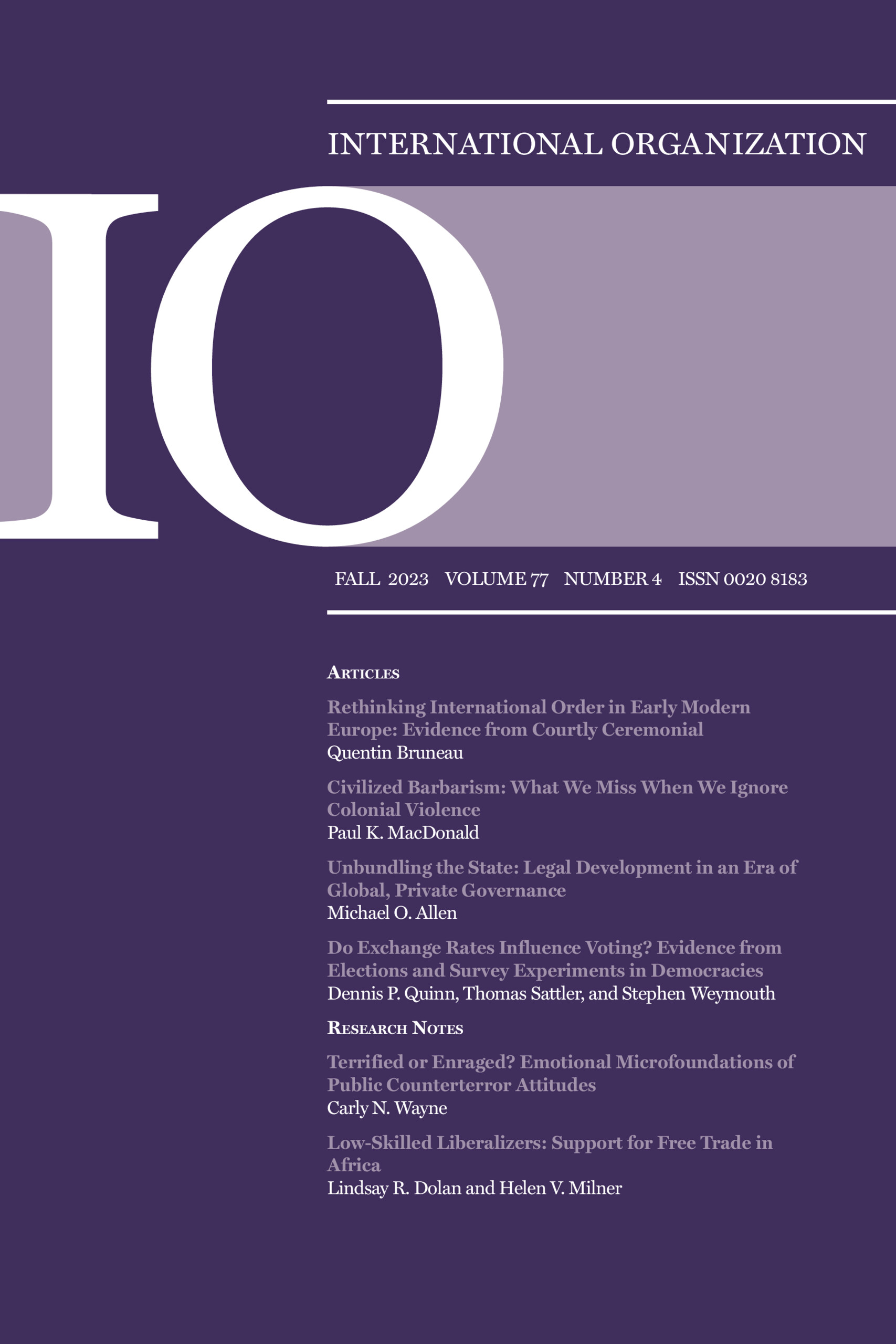Building from the Brain: Advancing the Study of Threat Perception in International Relations
IF 4.5
1区 社会学
Q1 INTERNATIONAL RELATIONS
引用次数: 0
Abstract
“Threat perception” is frequently invoked as a causal variable in theories of international relations and foreign policy decision making. Yet haphazard conceptualization and untested psychological assumptions leave its effects poorly understood. In this article, I propose a unified solution to these two related problems: taking the brain into account. I first show that this approach solves the conceptualization problem by generating two distinct concepts that generalize across existing theories, align with plain language, and are associated with specific brain-level processes:从大脑出发:推进国际关系中的威胁感知研究
在国际关系理论和外交政策决策中,“威胁感知”经常作为一个因果变量被引用。然而,随意的概念化和未经检验的心理假设使其影响难以理解。在这篇文章中,我对这两个相关的问题提出了一个统一的解决方案:将大脑考虑在内。我首先表明,这种方法通过产生两个不同的概念来解决概念化问题,这两个概念概括了现有的理论,与简单的语言保持一致,并与特定的大脑层面的过程相关联:威胁作为危险的感知(主观地从任何来源理解危险)和威胁作为信号的感知(检测意图伤害的陈述)。因为这两种类型的感知都发生在大脑中,捕捉这些过程的大规模神经成像数据提供了一种经验检验IR理论中嵌入的一些心理假设的方法。我使用关于冲突决策(“伤害即成本”)和强制(“意图不可测”)的文献中的假设进行了两个这样的测试。基于对15个基于坐标的荟萃分析的原始分析,包括500多个研究和11,000多个受试者,我得出结论,这些假设与关于大脑如何应对任何一种威胁的累积证据不一致。此外,我还表明,大脑层面的数据阐明了威胁感知对行为影响的各个方面,而这些方面尚未被纳入IR理论。因此,推进威胁感知的研究需要一种基于我们对大脑的了解的微观基础方法。
本文章由计算机程序翻译,如有差异,请以英文原文为准。
求助全文
约1分钟内获得全文
求助全文
来源期刊

International Organization
Multiple-
CiteScore
14.50
自引率
1.30%
发文量
25
期刊介绍:
International Organization (IO) is a prominent peer-reviewed journal that comprehensively covers the field of international affairs. Its subject areas encompass foreign policies, international relations, political economy, security policies, environmental disputes, regional integration, alliance patterns, conflict resolution, economic development, and international capital movements. Continuously ranked among the top journals in the field, IO does not publish book reviews but instead features high-quality review essays that survey new developments, synthesize important ideas, and address key issues for future scholarship.
 求助内容:
求助内容: 应助结果提醒方式:
应助结果提醒方式:


